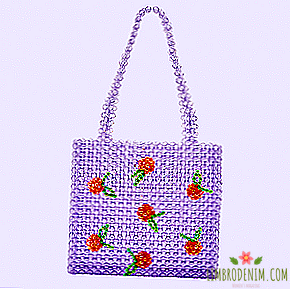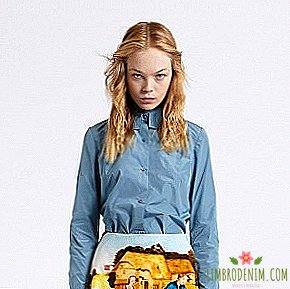The return of luxury: Why minimalism ordered to live long
If in the modern fashion industry and there is a person who is able to read the desires of the public with almost unconditional accuracy and broadcast them through clothes, then this is Alessandro Michele. It was he who three years ago made everyone believe that gender boundaries in fashion are no more than an archaic stereotype, and at the same time deftly launched into the stratosphere of the fashion universe a trend for the style of a well-read intellectual intellectual of May 1968.
Gradually, the vinaigrette that Michele showed in his collections for Gucci became more and more stuffed with additional ingredients: here you are both optical illusions in the spirit of Schiaparelli’s works of the 1930s, and references to the late 1970s and Yves Saint Laurent, and the loud cacophony from Asian , punk, 1980s and zero. The apex of all these luxuries became the Gucci collections of the 2017 and autumn-winter cruise seasons 2017/2018: in the first, the excessive aesthetics of the mid-2000s is quite straightforward, without equivocation, and in the second they are completely mixed into a bunch of jacquards and sequins, furs and rhinestones.

Creativity Michele is a vivid, but far from the only example of the fact that today fashion brands are getting more and more confident from minimalism, which marked the first half of the second decade of the 21st century. For the last five years, we only did what we said about the rethinking of the trends of the mid-1990s: about the new reading of the heritage of Helmut Lang and Gilles Zander, about the early collections of Miuccia Prada, who after almost a quarter of a century have not lost any relevance, about the new femininity that is not requires excessive decoration (after all, the current feminist agenda again decided that a woman has the right to neglect the traditional canons of beauty for the sake of comfort).
The idea reached its apogee with the advent of the so-called Normcore - "fashion without fashion" - and eventually turned into a snake that bit the tail itself. In a word, all this time we arranged fashion, and at the same time ourselves, detox therapy: we diligently cleaned, eliminating everything superfluous, our wardrobes, tried to imbue with ideas of conscious consumption and learn to live with a minimum set of clothes, following the principle of “better less, but better". Designers, in turn, encouraged us to buy one, but perfect, instead of ten dresses with intricate décor, and cultivate "new" minimalism in their collections - just remember Phoebe Faylo for Céline and Raf Simons for Jil Sander.
"


Designers urged us to buy instead of ten dresses with intricate decor to buy one, but perfect
Fashion journalists proclaimed the birth of an alternative heroine of our time, who has enough worries and without picking up shoes to the bag, which means that the functionality and conciseness of design in clothes for her are primary values. In a word, it seemed that minimalism and the rejection of ostentatious luxury, which had been characteristic of the previous decade, would linger with us for a long time and in general would become the main fashion postulates, but that was not the case. The collections of the last seasons increasingly remind us of the fashion of truly exuberant decades — the 1970s, 1980s, 2000s — and bring back to our attention the voluminous shoulders-puffs worn by the Dynasty heroines, logomania and outfits in spirit of "wear all the best at once." It seems that the minimalism of the sample of the 2010s ordered to live long - but why?
In fact, in order to understand why excessiveness and deliberate luxury are returning to fashion right now, it is useful to look back into the past. If we imagine periods of minimalism and conditional "maximalism" in fashion in the form of a diagram, it will look like a uniform sine wave with intervals of about ten years. This, of course, does not mean that each fashionable epoch was identified with a certain unified style: for example, in the 1920s we associate with equal success both with shanel’s bow à la garçonne, and with the flapper girls dressed up in beaded fringe, but 1930s - with the brilliantly simple dresses of Madeleine Vionnet and Madame Gre and the eccentric excessiveness of surrealism by Elsa Schiaparelli. The reason why each new generation of designers (and sometimes almost simultaneously) sought to subvert the stylistic and visual canons of the previous one, was the very essence of fashion as a phenomenon, its purpose - to arouse the interest of the public, offering it something new.


Often it is the interest in novelty that prompts us to consume fashion, which makes this area related to the entertainment industry. Since clothes ceased to be just clothes and began to constitute a whole set of connotations relating to the social and financial position of the owner, his life habits and even political position, the possibility of constant changes and updates has become the main driving force for fashion.
So, at the dawn of the first wave of feminism, girls massively refused to pull down corsets, heavy skirts and hats, causing their decision by the fact that it is much more convenient to lead an active lifestyle in shortened dresses without too much decoration, and in general they don’t want to be just a beautifully dressed appendage men The return to the image of canonical femininity in the next decade was dictated by the growing popularity of Hollywood, who in the 1930s began to make big money on the film industry (and at the same time attract prominent designers to work).


Fashion journalists proclaimed the birth of an alternative heroine of our time, who has enough worries and without picking up shoes to the bag
Further more. The transition from the deliberate luxury of the 1950s to the brevity of the 1960s was, as we know, inspired by the desire of a new generation of fashion consumers in a showy manner to abandon the ideals of the previous generation and build their own visual code, in which the simple plan of simple silhouettes and the use of unconventional materials to create clothes. Yves Saint-Laurent proclaimed his return to theatricality in fashion as his sensational 1971 Libération / Quarante collection (which, by the way, was very different from everything the designer had done before) inspired by the 1940s and caused outrage among the honorable public. Saint Laurent - consciously or not - set the fashion for the new vector, which she followed throughout the 1970s: using deliberate kitsch, exposing genuine or made-up luxury to overthrow bourgeois fashion and calm status symbols of the old design.
In such a way of self-expression, the new generation saw an opportunity to escape from the feeling of ever-increasing anxiety - from the continuing war in Vietnam, the oil crisis of 1973 and the tension in the world in the late 1970s and early 1980s. Moreover, the higher the unemployment rate became, the more actively people sought to consume and the more fashionable brands motivated them to make purchases.
Fashion began to turn into a full-fledged part of the entertainment industry, which sold not just clothes, but the idea of a new identity, and became a convenient form of escapism, which could stifle anxiety and create the appearance of well-being. Indecently rich nouveau riche became new models for imitation, reality shows like “Lifestyles of the Rich and Famous” - super popular forerunners of the “Kardashian Family”, and the concept of “this is too” disappeared from everyday life in the context of clothing. Obsession with status for many has become one of the defining values in life, the ways of achieving it are secondary. The end of the 1980s was met by the society as if exhausted by its own race for consumption - as it turned out, shopping 24/7 is not a guarantee of happiness.


The turning point was the "Black Monday" October 19, 1987 - a sharp and maximum collapse of the exchange market, which is called the prologue to the economic crisis of the 1990s. The fashion responded to a shaky financial situation in the world by turning 180 degrees: putting its wealth on display in the prevailing situation began to be considered a move, the consumption rate of fashionable goods decreased, and the designers reacted to the changes by offering customers austere minimalism. Phil Thornton, a journalist with The Face, wrote in the early 1990s: "The abundance of the 1980s was over, and it became clear what an ambitious desire to dress in such a way as to improve one’s social status could be an empty and dubious game."
However, the turn to a new course began to appear in the second half of the 1990s, when French fashion houses began to invite young and ambitious designers as creative directors, who were not interested in playing according to the rules of minimalism. Having taken hold of historical brands, businessmen led by Bernard Arnaud and Francois Henri-Pino decided to turn fashion into a full-fledged tool for making money, and for this it was necessary to turn fashion shows into entertainment shows, and things shown on the catwalks into objects of dreams , the desire to possess which would encourage the public to buy perfumes, accessories and other small things. The end of the economic recession in 2001 and the transition to one of the "fattest" decades, sitting comfortably on a huge oil well, became an excellent ground for restoring fashion to ostentatious excessiveness: buy to be happy.

So, today we again and again hear about returning not just by 1980, not zero, but the list of the top trends of the next season includes velvet, jacquard along with voluminous shoulders, sequins and colored fur. In part, everything can be reduced to the fact that people are simply tired of the 2010s snobbish minimalism, which has related them since the 1990s with its maxims like "if you are able to appreciate such intellectual fashion, then you are smart enough and advanced." But, of course, it's not just that.
If we consider fashion as a form of escapism, which it somehow manifested itself throughout history, we can assume that today we are again striving to hide behind the harsh reality behind bright, in every sense, clothes. When in the world one terrible event occurs after another and hardly anyone feels one hundred percent confidence in the future, when concern about fashion and material values departs to the periphery of public attention, brands have to look for new ways to attract audiences.
Designers create an ephemeral picture of joy and well-being, motivating people to buy not just things, but a portion of endorphins. Consumers, in turn, are ready to enter the game - simply because it is sometimes easier and more useful to hide under the dome of external optimism, rather than frustrating about what we cannot change. The luxury and dedication of labels for the modern generation is not so much a desire for conspicuous consumption, as an ironic game with the concepts of status, an attempt to laugh at the crisis state of the economy, or simply a desire to put on a mask.
Photo: Gucci, Céline, Jil Sander, Wikimedia Commons (1, 2, 3), Area, Off-White





